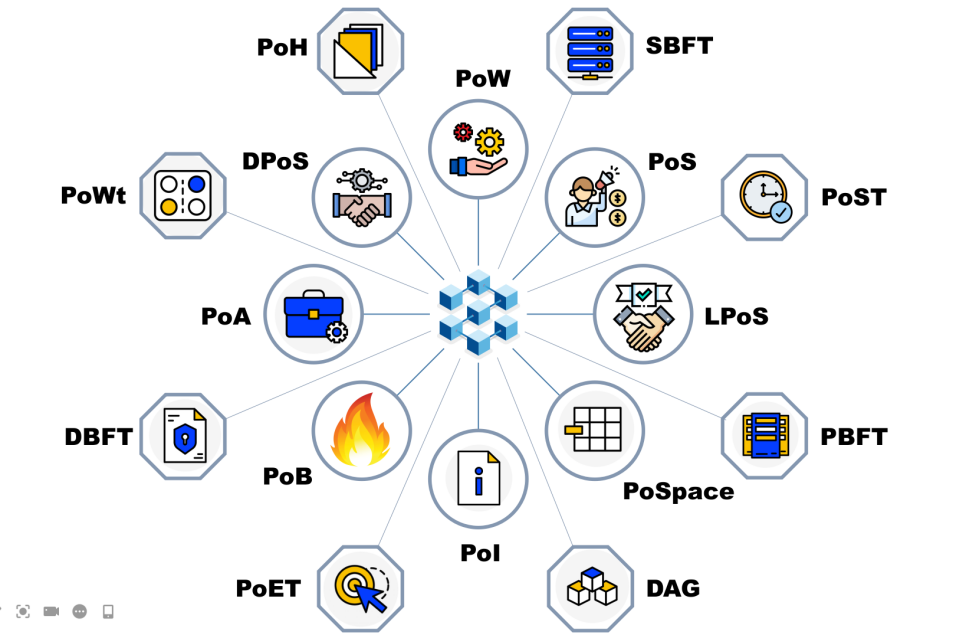We share verified earning schemes daily on Telegram.
In our Telegram channel, you'll find crypto signals, insider info on HYIPs, combo deals for tappers, and coin giveaways. Only verified earning methods without fluff.
Consensus in relation to blockchain refers to an agreement on the state of data in the blocks. A consensus algorithm, i.e., the mechanism for achieving it, is extremely important because blockchain is a decentralized network that lacks a single authority capable of verifying and updating the transaction ledger.
As a result, consensus is required for the proper functioning of the blockchain: the network will only operate correctly if all node operators in the network agree on its state.
Several well-known consensus algorithms are distinguished: Proof-of-Work and Proof-of-Stake.
Over time, many other algorithms have emerged, but PoW remains widely used. This algorithm requires solving a complex problem, which necessitates computational power – while verifying the solution is significantly easier. Thanks to this, PoW is resilient and ensures complete network transparency but demands high energy consumption: traditional mining involves solving such problems to obtain cryptocurrency based on PoW.
The main vulnerability of this algorithm is that if 51% of the network's computational power falls into the hands of one person or a group of like-minded individuals, they would gain full control over the entire network. They could make any changes to the database, even completely rewriting it. For a major cryptocurrency, this does not pose a significant risk, but for one just beginning to develop, it can be a serious threat.
For example, if a participant owns 0.1% of the entire network, they will, on average, form one block out of a thousand. Thus, hardware power ceases to play a role, and electricity costs are reduced significantly. One of the drawbacks of this algorithm is that it encourages wealth accumulation, which can lead to reduced decentralization. Additionally, there is a risk that a group holding a large portion of a particular cryptocurrency could form – allowing them to impose their decisions on others.
There are also other algorithms, such as Proof-of-Importance. Like PoS, it takes into account the user's share in the network but also considers the number of transactions conducted to or from their wallet. In other words, not only ownership share but also activity in the network plays a role.











Information
Users of Гости are not allowed to comment this publication.